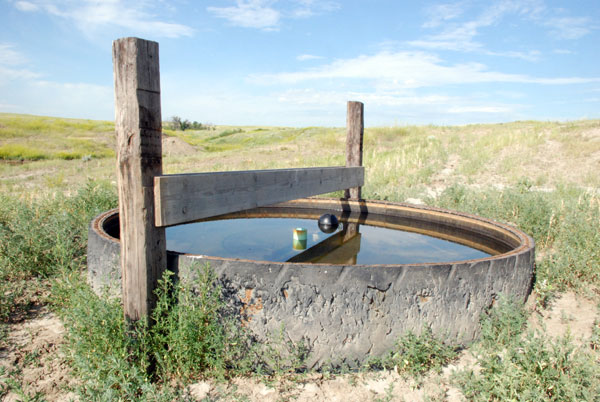Cattle aren’t the water guzzlers they’re made out to be
April 20, 2015

Water is the lifeblood of U.S. food production. That’s why California’s drought is hitting the national headlines. A massive 80% of the water used by humans in California goes to agriculture. The state’s Central Valley has 17% of the irrigated land in the U.S. and produces a quarter of the nation’s food.
The California drought, however, is in its fourth year and shows no signs of breaking. Farmers and growers, mostly in the Central Valley, fallowed 400,000 acres of land last year and are likely to add at least another 200,000 acres this year.
That’s because California’s snowpack, which provides vital water to the valley, is the smallest in history. In addition, farmers have already depleted underground water sources. There’s less water everywhere.
The near-historic drought will continue to make it difficult for the state’s ranchers to keep their beef cow herds intact. Remarkably, the state’s beef cow numbers on Jan. 1 were exactly the same as the year before — 600,000 head. Producers did an outstanding job in preserving precious pasture and water by selling calves early and moving their herds around. Those calves went out of state to feedlots.
Most of the pressure last year — and it will be worse this year — was on cattle in grass-fed beef programs. That’s because they use a lot more water than feedlot cattle. Research reveals that it takes 226 more days for grass-finished cattle to reach market weight than grain-finished cattle. Compared to grass-fed beef, grain-fed beef uses 76% less water.
Water is one of beef production’s many inputs being measured to assess the industry’s improvement in overall sustainability, which is impressive and counters spurious claims made about the industry. According to a study published in 2011 in the Journal of Animal Science, the amount of water used to raise beef today compared to 30 years ago has been reduced by 12%.

70+ photos showcasing all types of cattle nutrition
Readers share their favorite photos of cattle grazing or steers bellied up to the feedbunk. See reader favorite nutrition photos here.
Another study by the University of California-Davis says it takes just 441 gallons of water to produce one pound of boneless beef. That’s about 110 gallons for a quarter-pound hamburger. This study takes into consideration the water used for an animal to drink, to irrigate pastureland that cattle graze on, to grow crops that cattle are fed and to process the beef.
Crop irrigation accounts for 95% of water use by the beef value chain, according to the National Cattlemen’s Beef Association. In this impact category, a 3% reduction in use was achieved between 2005 and 2011. Reductions in consumptive water use were the result of several factors, including improved crop yields and less water needed to produce feed resources, improvements in packing plant water efficiency, optimizations in the case-ready phase that lead to packaging reductions, and reduced pre-chain water use.
Beef’s water usage is large but should be measured by other usage. Approximately 410 billion gallons of water are used in the U.S. every day, with nearly half used for production of electrical power or thermoelectric power generation. The Environmental Protection Agency estimates the average American uses about 100 gallons of water daily.
Activities such as taking a bath requires up to 70 gallons of water. A five-minute shower uses 10 to 25 gallons. A running toilet can waste up to 200 gallons of water daily. More than 713 gallons of water go into the production of one cotton T-shirt. The New York City water supply system leaks 36 million gallons per day. It takes 39,090 gallons of water to manufacture a new car. At one drip per second, a faucet can leak 3,000 gallons per year.
None of these uses excuse the beef industry from managing its water resources even more efficiently. But the next time you hear someone complaining about beef’s water usage, cite a couple of the usage examples above.
Steve Kay is editor and publisher of Cattle Buyers Weekly. See his weekly cattle market roundup each Friday afternoon at beefmagazine.com.
You might also enjoy:
When should you call the vet on a difficult calving?
60+ stunning photos that showcase ranch work ethics
Try one of these 9 ranch management concepts to improve your ranch
About the Author(s)
You May Also Like




.png?width=300&auto=webp&quality=80&disable=upscale)
